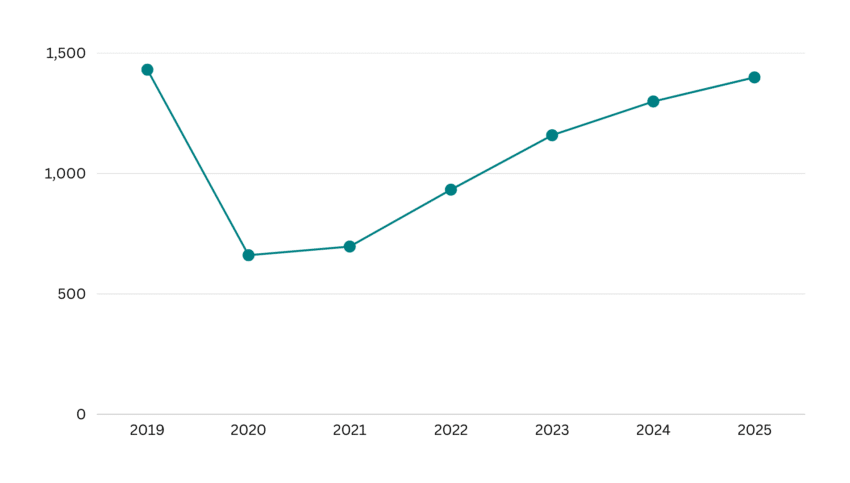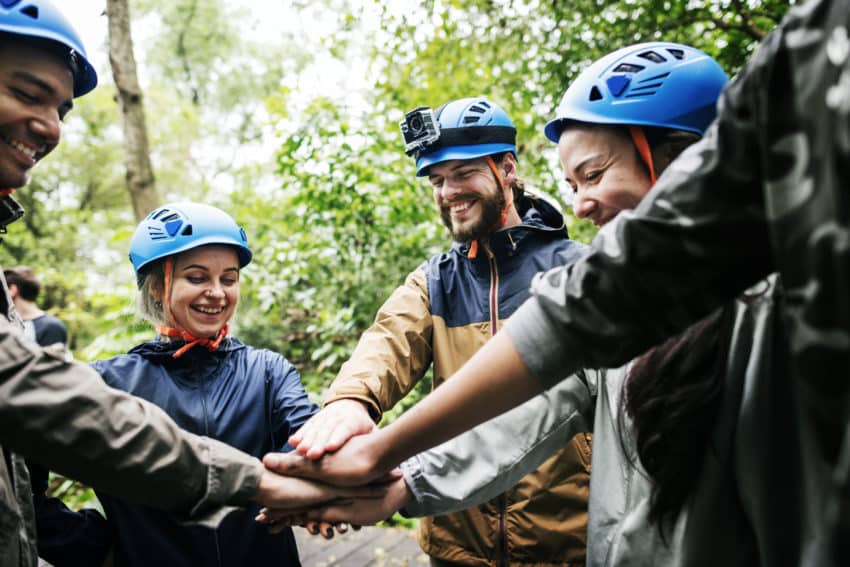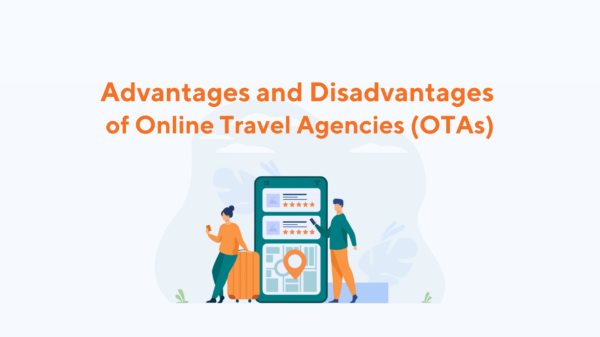Where does global business travel stand as the tourism industry recovers from COVID-19? There still isn’t a clear answer in terms of how quickly that segment of the industry will recover and if it will ever be the same. But while business travel has changed in many ways due to the pandemic, one thing remains the same: it is an incredibly lucrative market for tour operators to tap into.
As a tour operator, business travel can provide a number of revenue-generating opportunities, which include team-building tours, returning customers and word-of-mouth advertising. With all of its potential benefits, it should come as no surprise that business travel is a competitive space in the tourism industry. So, what does business travel look like as it recovers from COVID-19? And how can you ensure that your tours stand out among competitors?
What is the current state of business travel?
Before you begin catering your tours to corporate business travel, it’s helpful to have an understanding of what the market looks like today.

There are skeptics who doubt that the industry will ever reach its pre-pandemic levels, because the cost-saving nature of video conferencing and online work is too beneficial from a financial standpoint. But those who know business understand that it is all about relationships, both within a company and with clients. Digital communications simply cannot compare to the trust built through face-to-face interactions. As humans, we crave connections with others. The connections formed while team building over Zoom can feel severed as soon as the meeting ends. Through a shared experience like a team-building tour, participants leave feeling bonded and will have built wonderful, lasting memories together.
Studies show that global business travel is on its way to a full recovery. The Global Business Travel Association conducted a study of business travel covering spending and growth in 72 countries and 44 industries and found that global business travel should make a full recovery by mid 2026, returning to a 1.4 trillion dollar industry. In the same study, a survey revealed that 85% of business travelers said that they need travel to accomplish their business goals. Additionally, over three-fourths of those surveyed said that they expect to travel for work much more in 2023 than they did in 2022.

In order to gain a full understanding of what business travel currently looks like, we also have to look at the factors that could negatively affect the industry. The pandemic has taught us that some things are out of our control, but understanding the risks can help us to better prepare and respond to them. Some business travelers are hesitant to travel for a variety of reasons, including airline delays, inflation and new variants of COVID-19. The more you know about the things threatening business travel, the better you will be at adapting to them.
How does business travel compare to pre-pandemic levels?

Unsurprisingly, corporate business travel plummeted in 2020 as global lockdowns were issued and business trips were brought to a screeching halt. Before the pandemic, global business travel peaked in 2019, generating 1.4 trillion dollars. The business travel industry lost $770 billion between 2019 and 2020, but gained back $36 billion between 2020 and 2021 as travel became less restricted.
How to attract business travelers to your tours & activities
Business tourism is a valuable market in the tourism industry, which also makes it very competitive. As a tour operator, it’s a great time to start marketing your tours and activities to corporate groups so that you already have a strong reputation in the industry by the time it reaches a full recovery. There are a number of business travel marketing strategies that can help you gain a competitive edge and appeal to business travelers. Here are four ways to increase your reach and help your tour or activity become a go-to for business trips:

1. Work with a business travel management company:
When booking a corporate trip, many companies choose to work with travel management companies because they help take the stress out of organizing group trips. Partnering with a travel management company is great because it adds your tour into the group itinerary, making the whole process seamless for your customers. Consider companies that specialize in group excursions and those that have clients in industries you hope to attract.
2. Partner with travel agents:
Like travel management companies, partnering with a travel agent is extremely helpful for selling your tours because their clients trust that they will not lead them astray when it comes to booking a top-notch experience. Travel marketing strives to convince audiences that what you have to offer is worth their time and money, and having a travel agent endorse you will help to streamline that process. Finding the right travel agent to promote your tour can be as easy as contacting them on LinkedIn, networking at a travel show, or by flipping through the advertisements of travel magazines.
3. Market directly to corporations:
You can do this by dedicating a page on your website to showcasing your activities for business trips. This gives you the space to provide details about different team-building tours and activities to get visitors excited about what you have to offer. Be sure to include all of the relevant information like cost per person, minimum number of participants and any important COVID-19 or safety protocols. And last but certainly not least, make the page a one-stop shop by providing a booking link. You can see an example of a corporate events page on a company website here.
4. Tap into the local market:
The establishments in your general area provide an opportunity to sell your tours and activities while the business travel industry recovers from COVID-19. Attracting customers from your town or neighboring areas could be beneficial because it does not require air travel, which is something that some are still hesitant to do.
How to make your tours and activities appeal to business travelers
1. Offer group rates:

Booking a tour or activity for a group can be expensive, so your customers will appreciate any discounts or special group pricing. Depending on the type of tour that you provide, you might want to offer tiered group pricing. For example, if a regular ticket typically costs $120, you might want to offer groups of 5-10 people tickets for $100, then perhaps anything over 10 you could offer tickets for $80. Your ability to accommodate larger groups and how much you can discount your tickets will depend on the type of tour or activity that you are running.
Rezgo makes it easy to offer discounts based on promo codes, group sizes, packages and more.
2. Offer corporate-specific tours and activities:

A key factor when planning corporate specific events is team building. Perhaps there are ways that you can make your corporate tours more engaging and interactive, so that participants have a chance to collaborate. It’s also good to understand the organization or industry you’re targeting when planning your tour or activity. For example, if you’re trying to attract customers who work in the hospitality industry, you might want to incorporate local food or wine into your tour.
3. Provide transportation:
Organizing a trip for a larger group comes with a lot of logistics to sort out. Arranging transportation at the time of booking is one less thing for your customer to worry about and could help set your company out from the competition. Try using booking software, like Rezgo, that offers easy management of pickup and drop off locations at the time of booking.

It may seem like 2026 is a long ways away, but just because business travel has yet to make a full recovery, it’s not an area of tourism that should be overlooked. It is well on its way to returning to a trillion dollar sector of the tourism industry. With the right marketing and some tweaks to accommodate and attract business travelers, you can create an experience that will help them create lasting bonds and a stronger team.





